February 2, 2017
Let’s BEE Friends!
In just a few sweet weeks, my Mexican plum will be simply abuzz with small bees and butterflies.
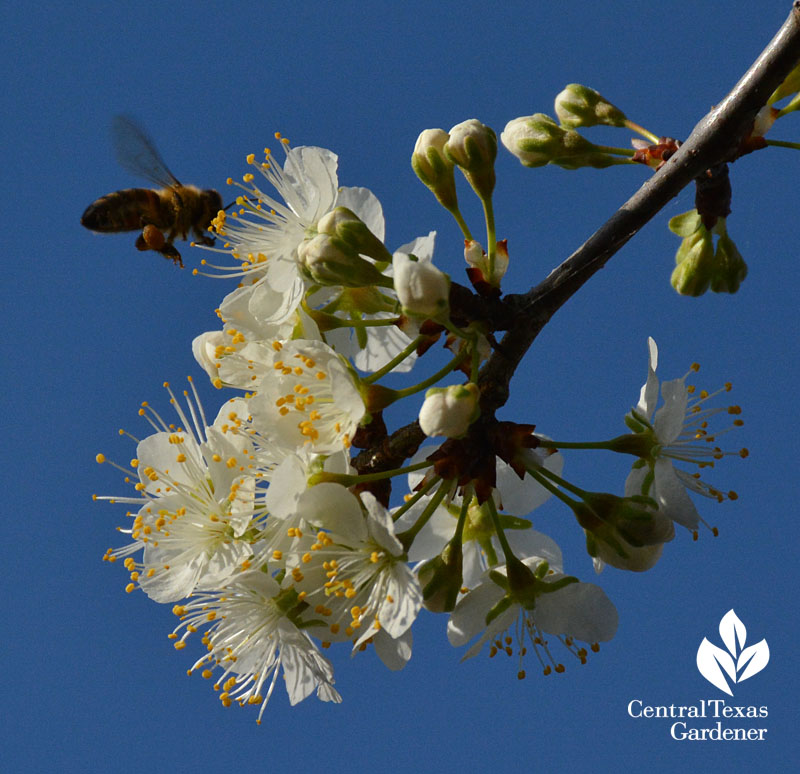
Mexican redbud takes over just after that.
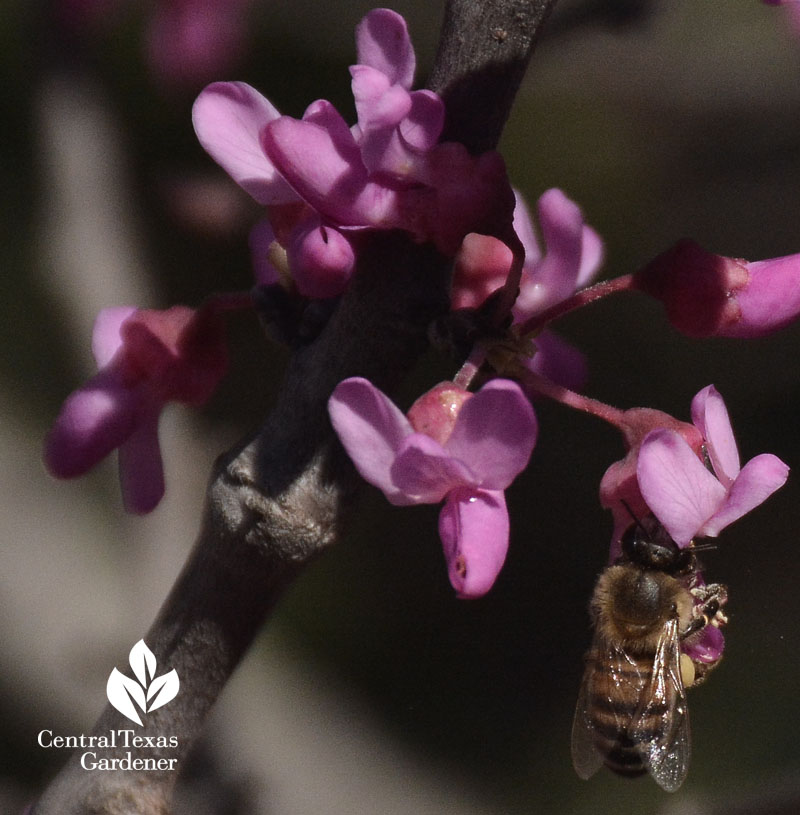
Native bees and honeybees are easy to please if you keep the garden pantry open all year. For us in winter, edible rosemary flowers offer good eating for bees and other pollinators.
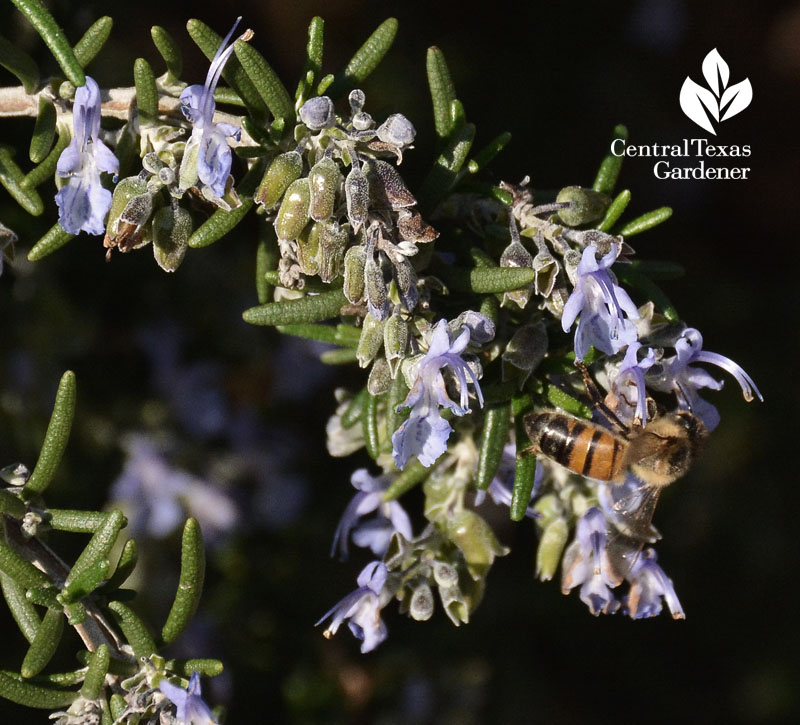
Normally, asters bloom for us in fall. Since little birds already chomped down all the seeds on my spent flowers, I clipped the branches to the ground. But some around town are still blooming!
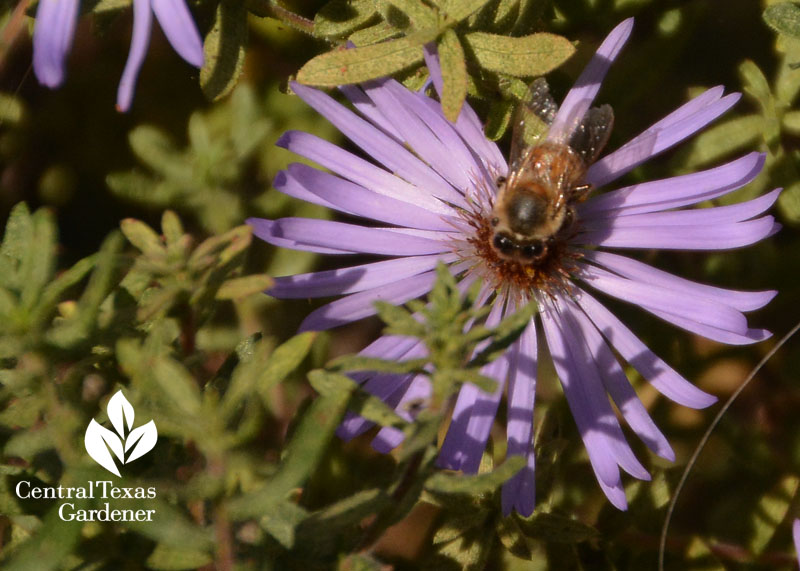
In winter, annual calendulas keep bees from starving when not much else is going on.
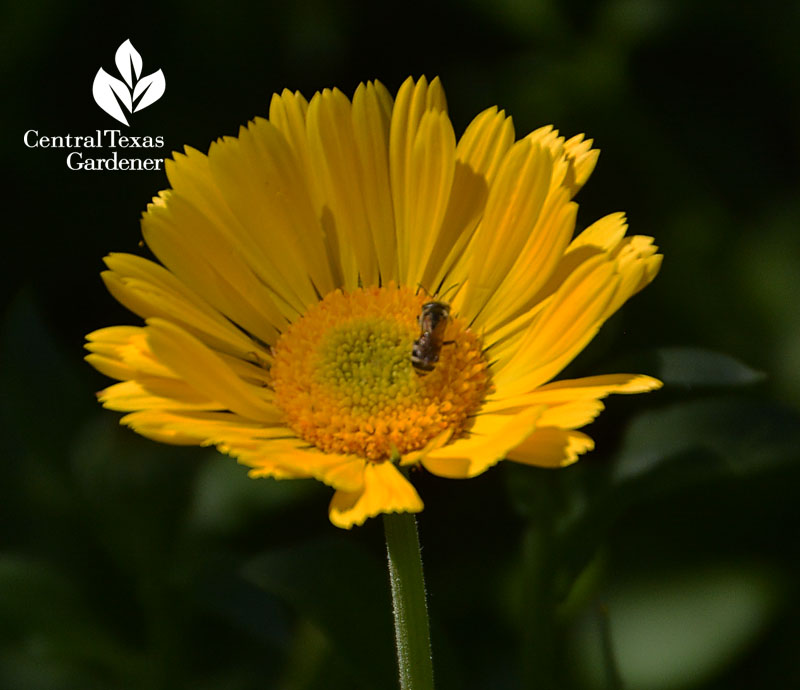
Everybody heads to poppies and native wildflowers like Indian blanket (Gaillardia pulchella) in mid-spring.
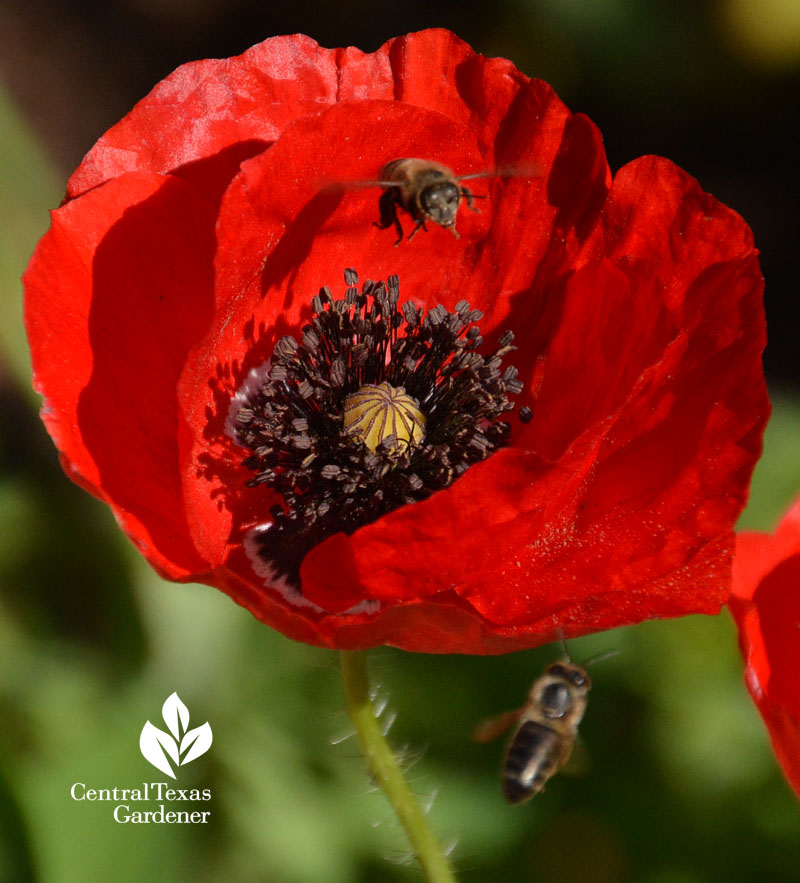
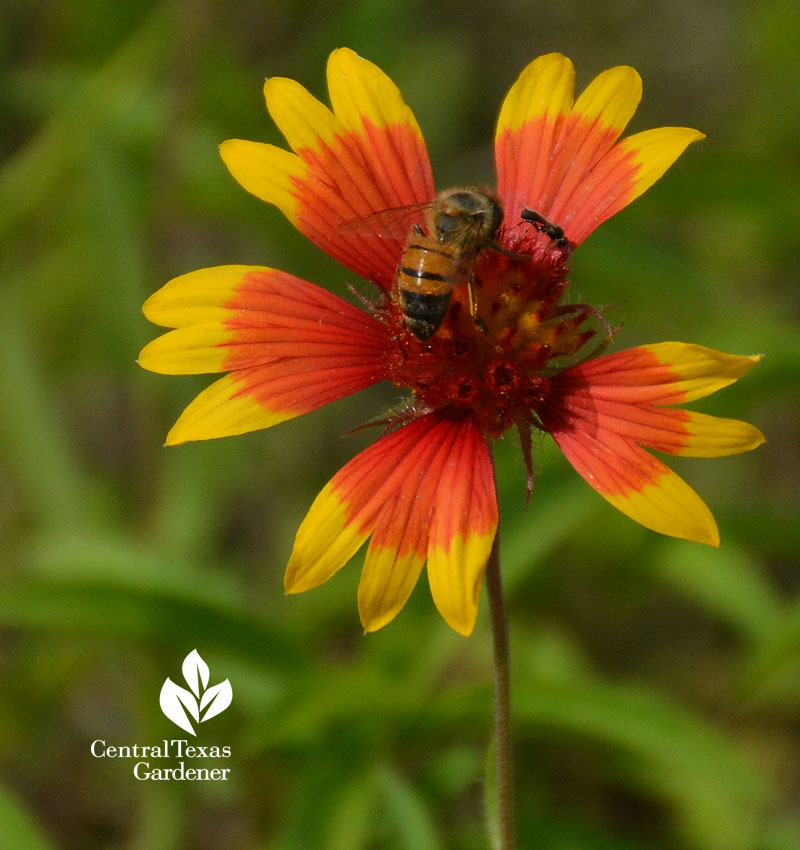
Cilantro’s a food fest for many pollinators when it bolts and flowers in late spring.
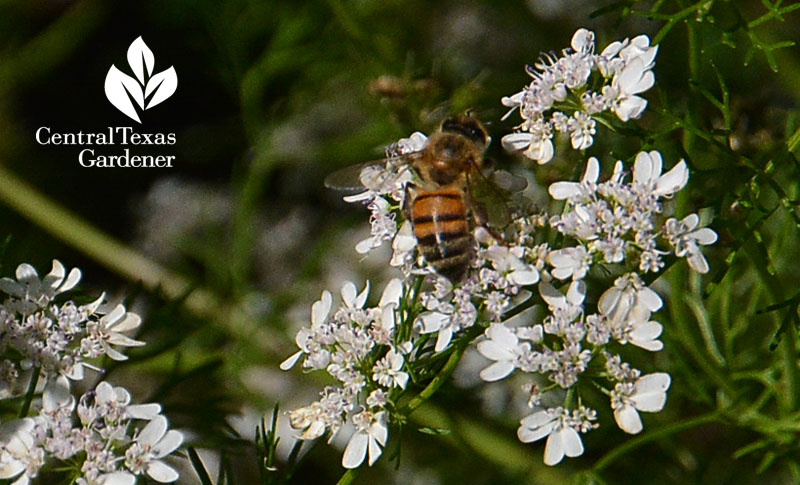
In summer, native Turk’s cap multi-tasks for hummingbirds, bees, and butterflies.
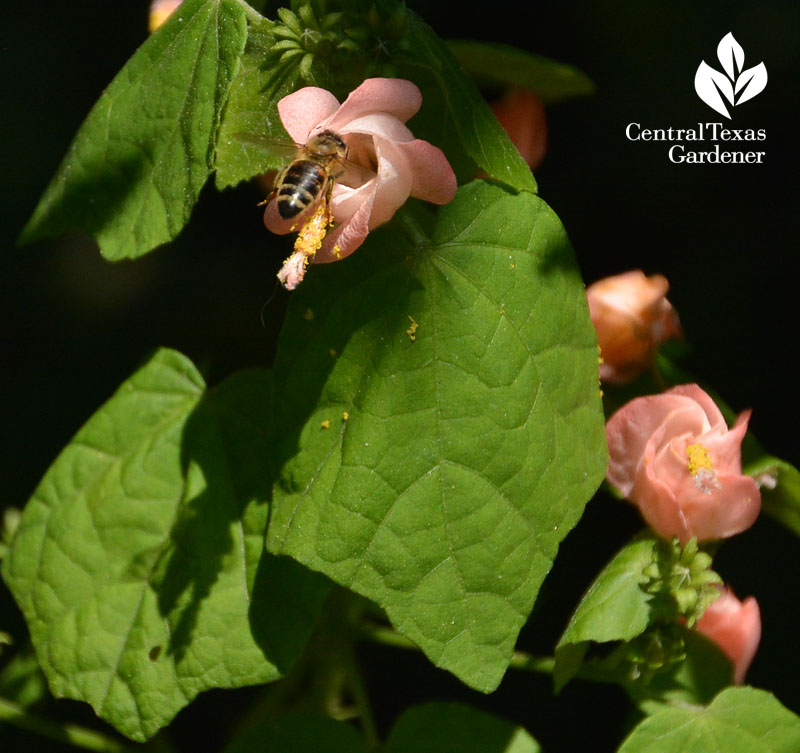
There are all kinds of bees out there, but you might spot a Carpenter bee on your native Hamelia patens.
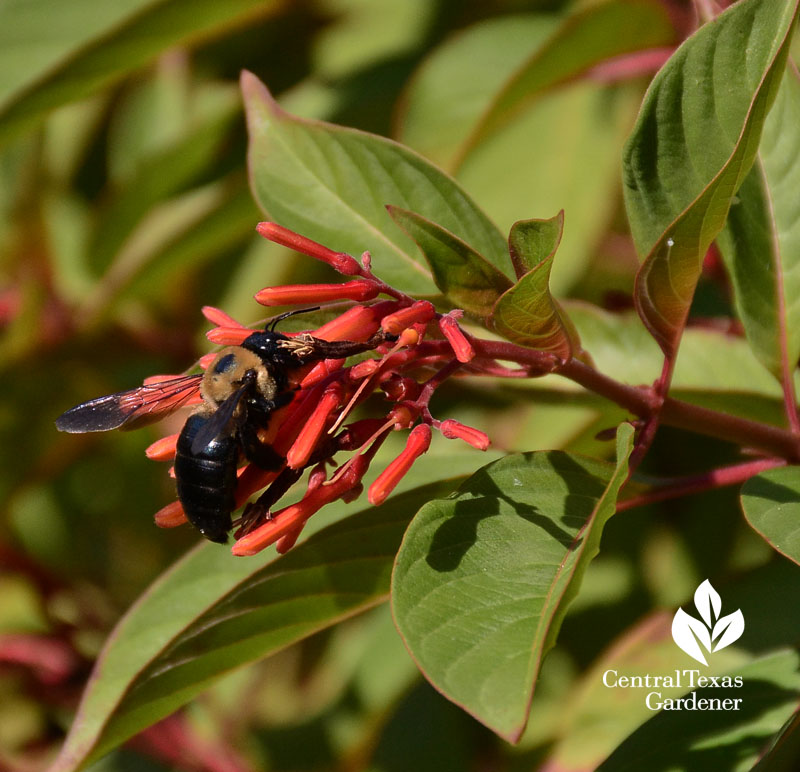
Native Salvia farinacea, commonly known as mealy blue sage, cools us down from spring through fall with soothing blue flowers.
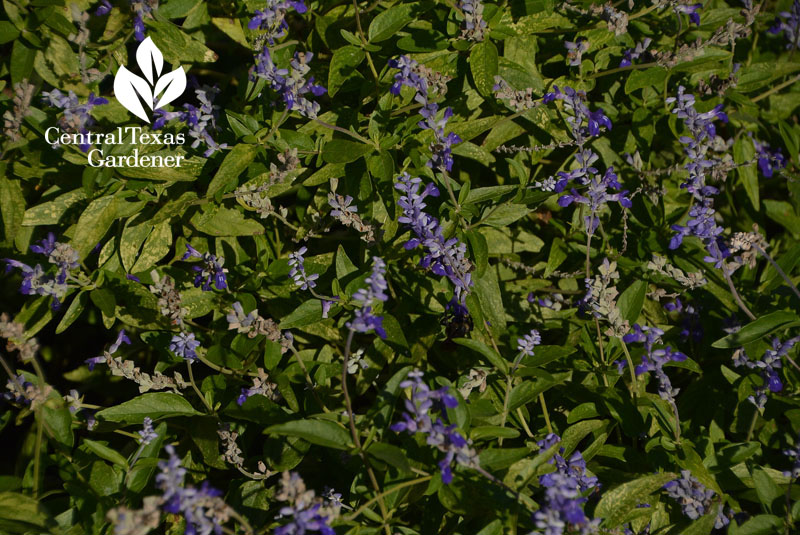
At the Travis County Extension demonstration garden, it’s truly a bee fest.
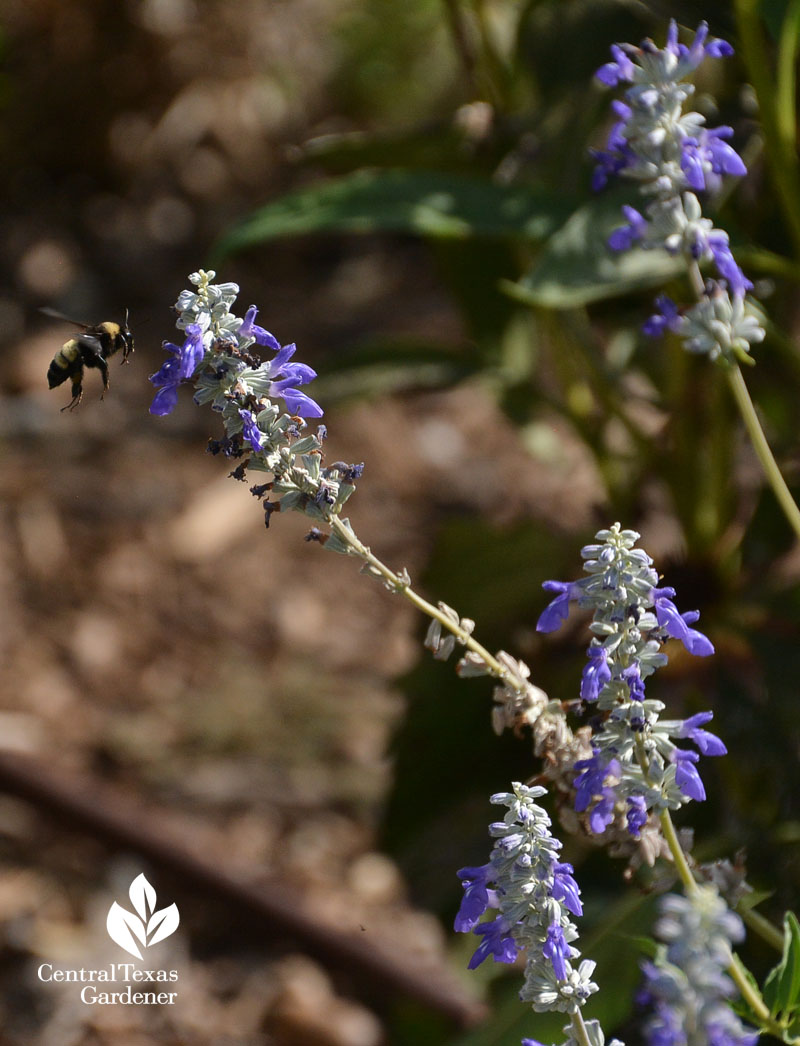
This week, Daphne explains how to grow this perennial member of the mint family in sunny or morning sun spots.
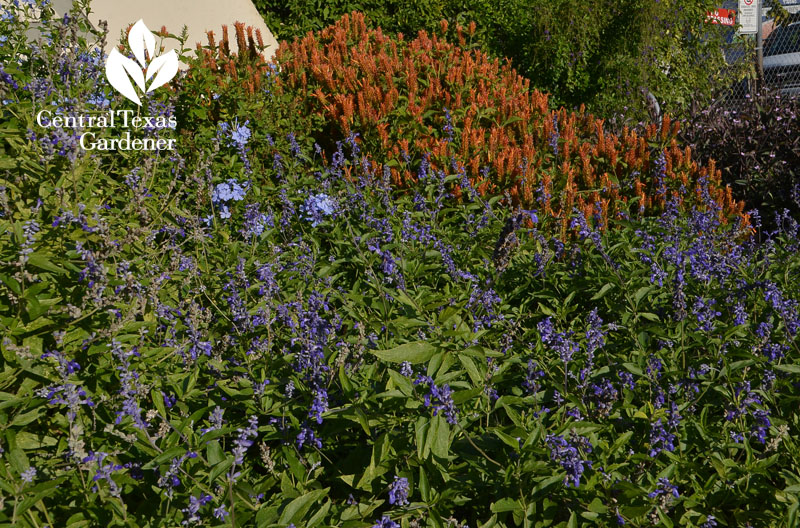
Although root hardy to USDA Zone 8, she tells us, mealy sage dies back to the ground each winter. Avoid pruning until you see new growth at the base. And it’s best to plant after the last frost date to give it plenty of time to establish before next winter. Find out more about Salvia farinacea.
Bees go nuts for bottlebrush tree (Callistemon spp.). See them snuggled in?
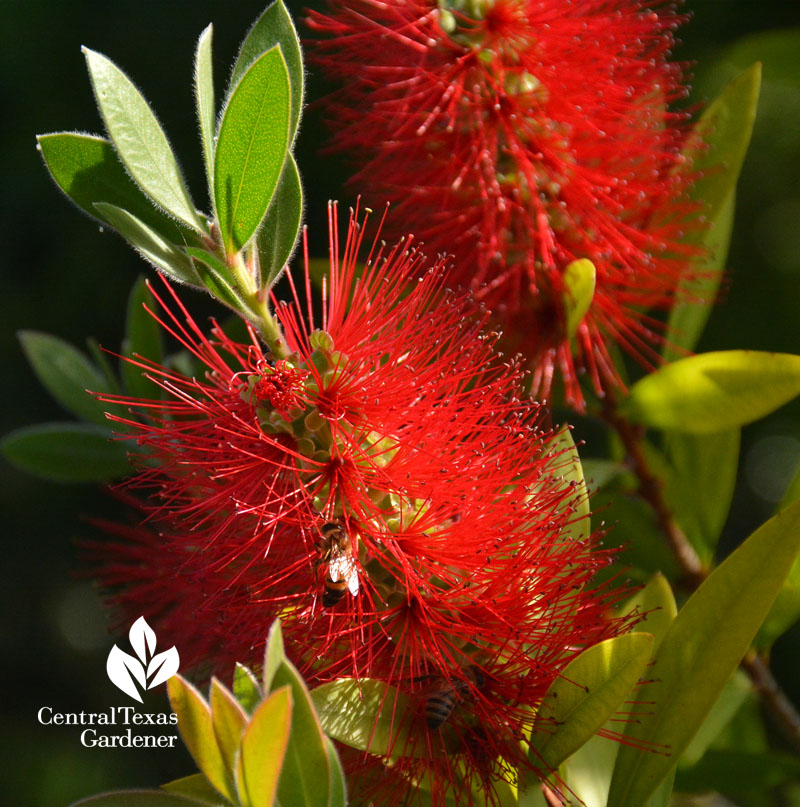
To illustrate our global connection, New Zealand bees are just as avid about a tree that’s in the same family as bottlebrush, Metrosideros, and very similar. KLRU’s Ted O’Brien snapped this picture in his parents’ driveway.
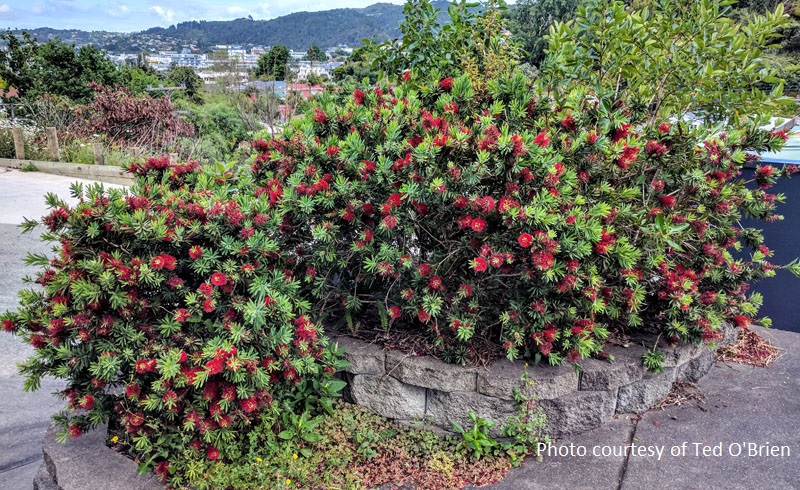
In New Zealand, it’s called Rata. The jar of creamy honey that Ted brought back even includes pollen count on the label!
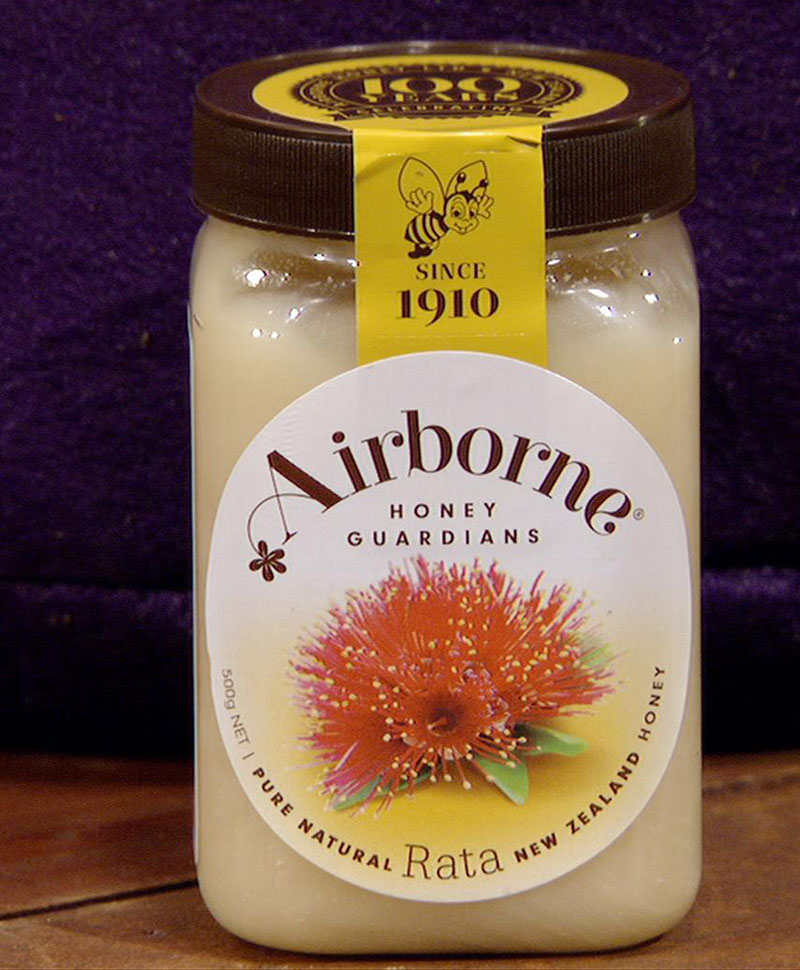
And here’s a first on CTG: Tom dons a beekeeper hat! As more people go for sustainable living, many are setting up hives for locavore honey. Bee-fore you jump into it, Master Beekeeper Tanya Phillips sweetens the deal with top tips for starting beehives.
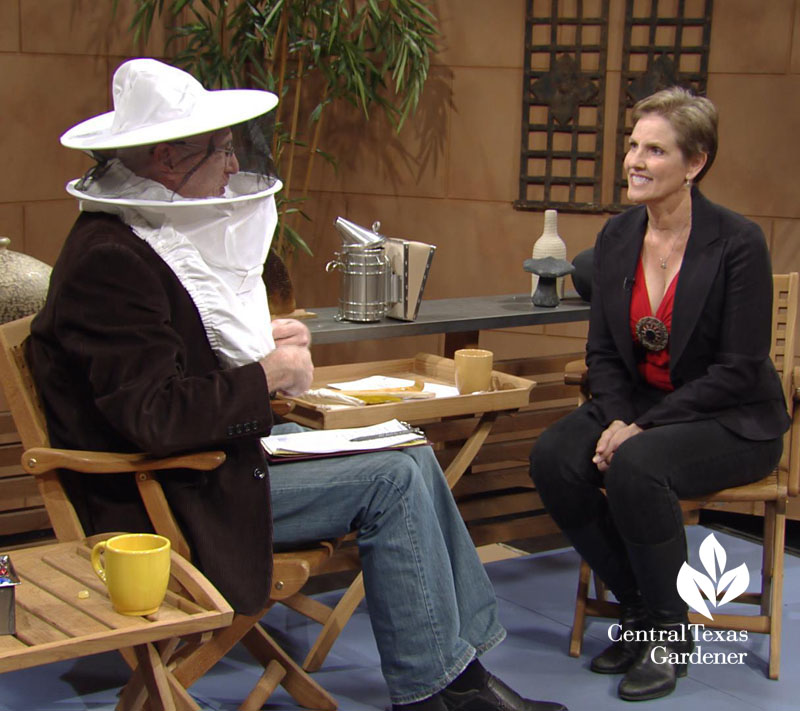
Owner of Bee Friendly Austin with husband Chuck, and founder of the Travis County Beekeepers Association, she’s got the buzz from set-up to honeycomb harvest.
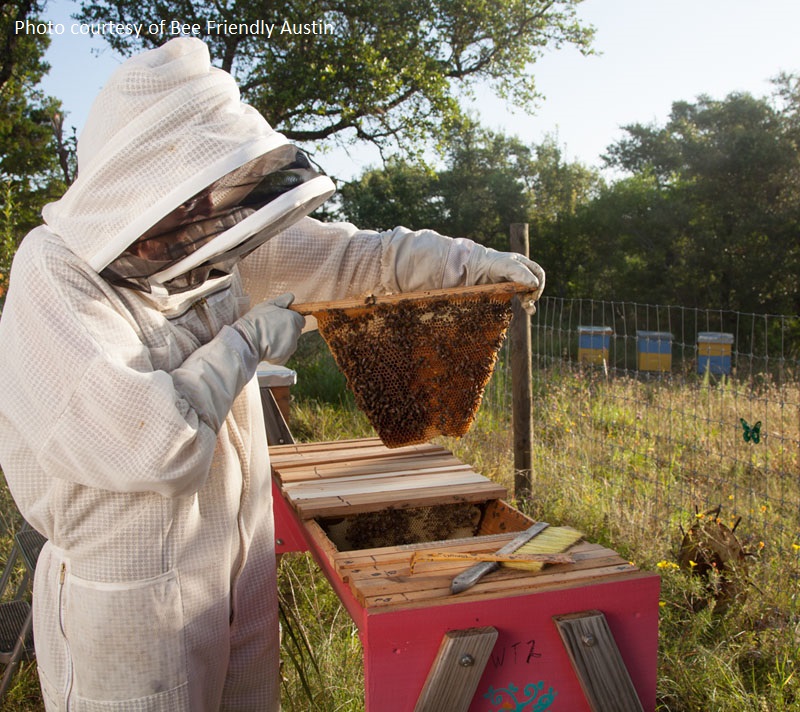
At Bee Friendly Austin, a small Certified Naturally Grown Apiary in Southwest Austin, you can take step-by-step classes. Tanya and Chuck also organize the annual Tour De Hives, this year on August 19.
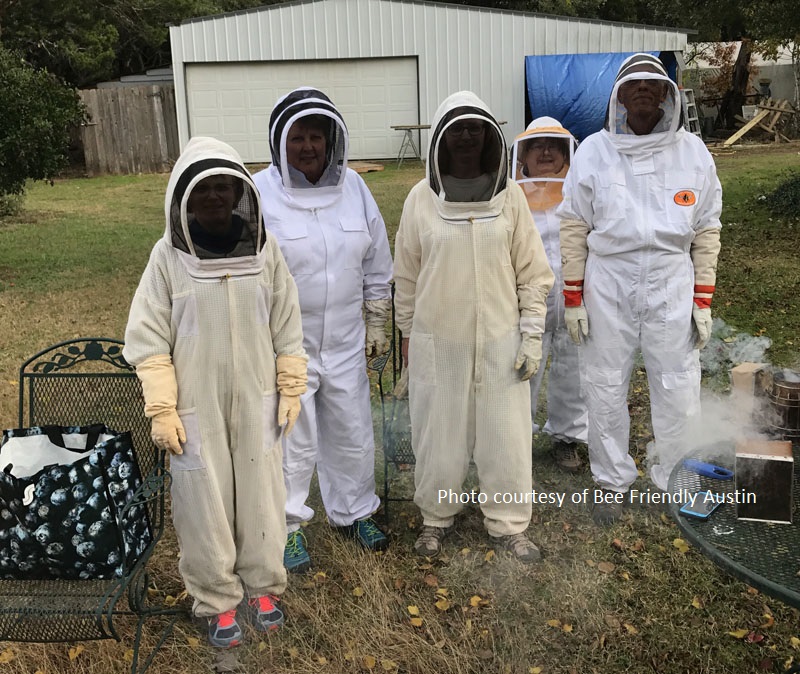
Shop online for artisan honey, soaps, and beekeeping gear.
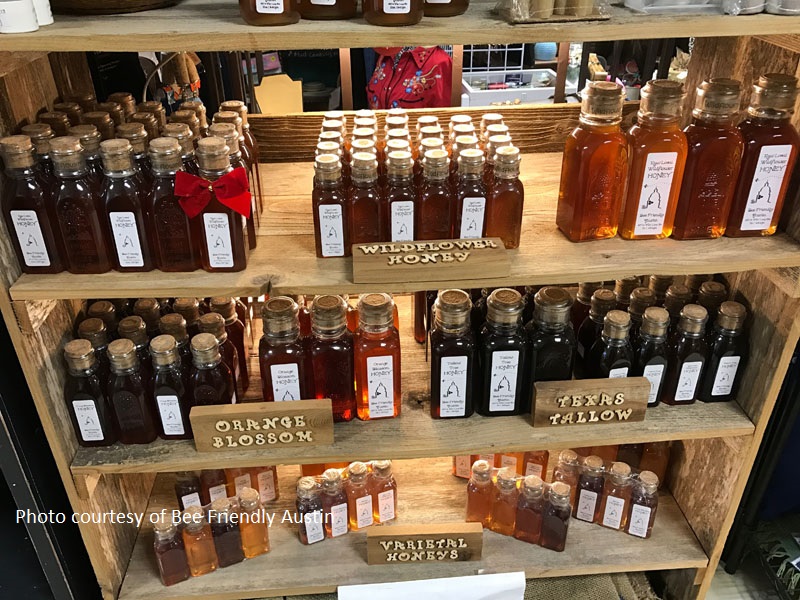
Travis County Beekeepers Association hosts speakers and provides resources, including who to call if you need to move a swarm.

And check out Tanya’s book, Beginning Beekeeping, coming out in March, but pre-order any time. And here’s her Top 10 Tips for starting out, including resources.
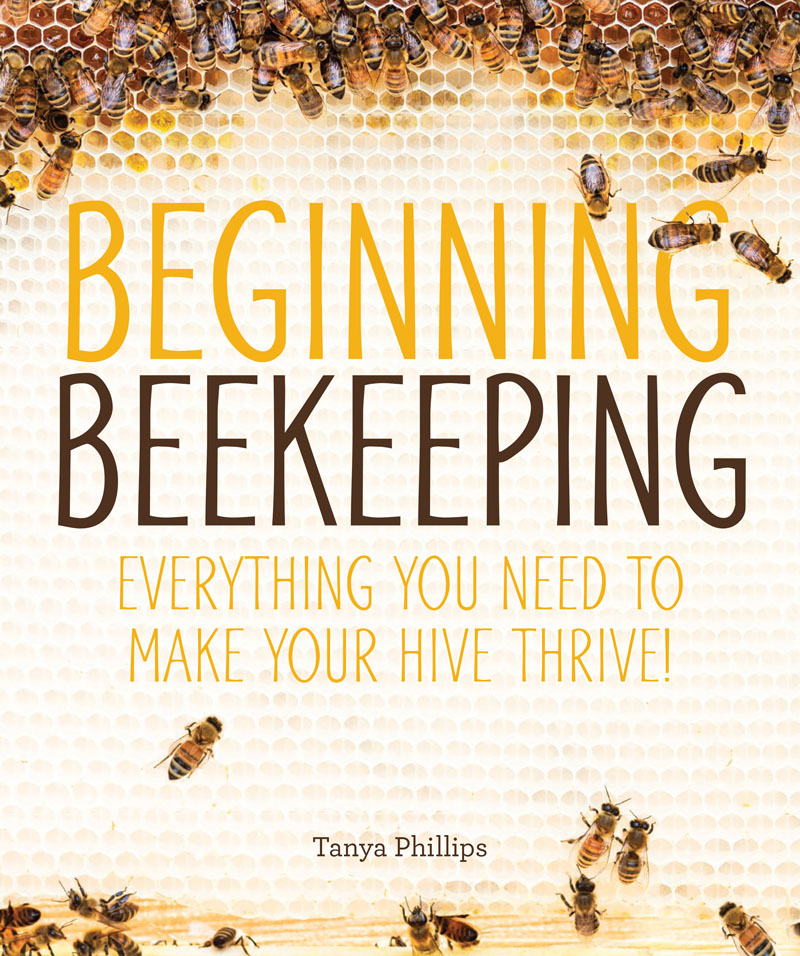
Not only can gardening reduce sensitivity to allergies, and boost our immune systems, digging in the soil is also a natural anti-depressant.
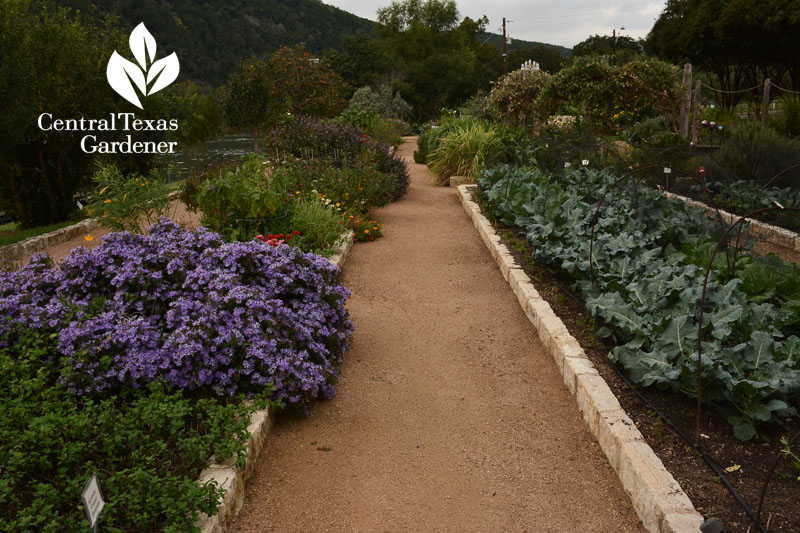
Trisha Shirey explains how soil microbes and being outside gives us a sense of well-being to beat the blues.
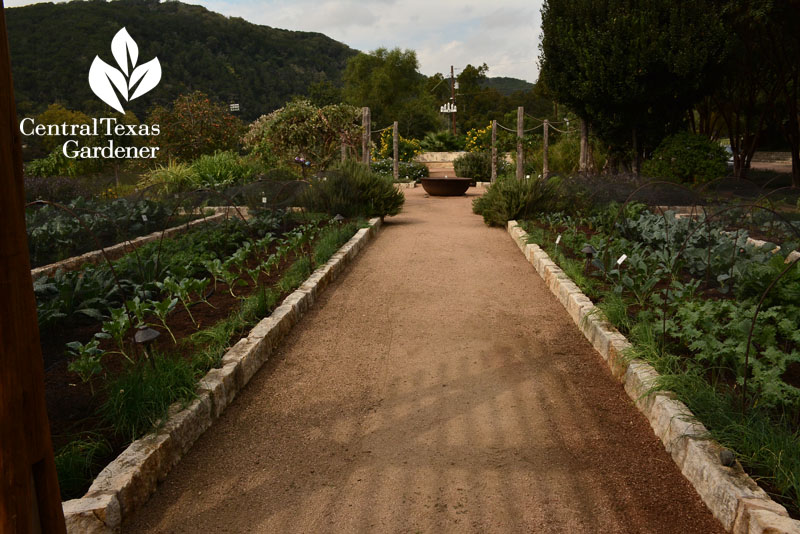
On tour, when Vicki Blachman slowly removed lawn for wildlife habitats, she added Mason bee houses to attract these solitary, non-stinging pollinators.
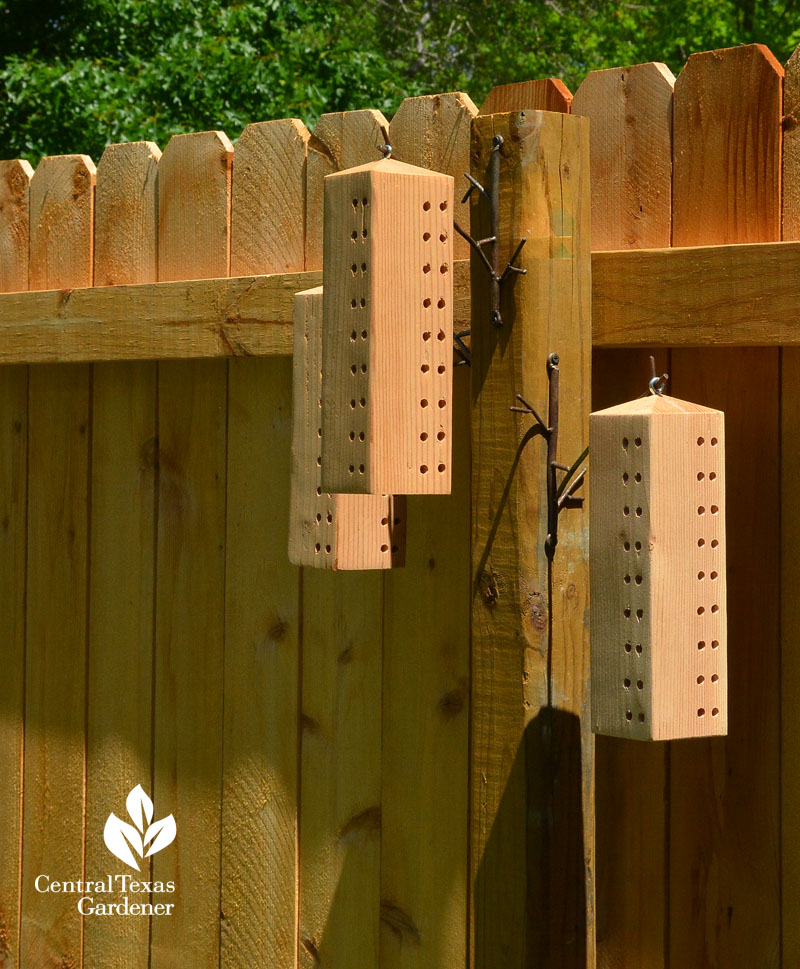
Watch now!
And thanks for buzzing by! See you next week, Linda

